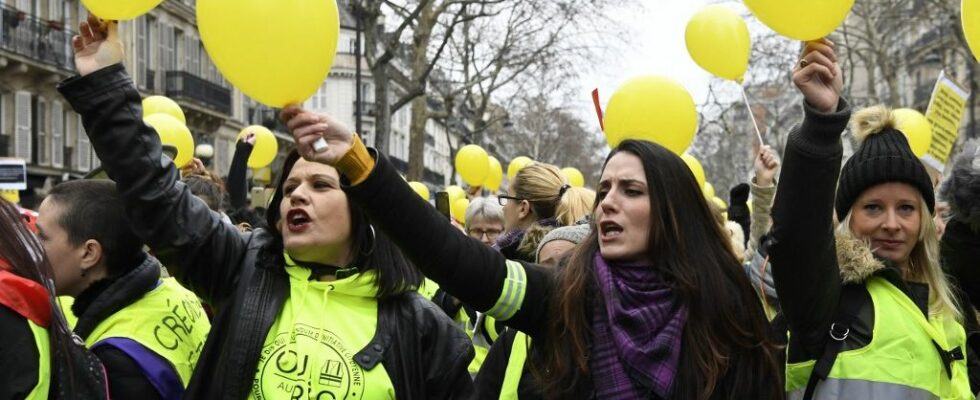“From the waltz of the roundabouts to the notebooks of anger”, this is the theme of the symposium which is being held on November 16 and 17 in the departmental archives of Gironde, four years after the movement of “yellow vests”. Myriam Congoste, doctor in anthropology who closely followed the mobilization in Saint-Macaire, in Gironde, intervenes in particular on the presence of women in this unprecedented mobilization. She agreed to answer questions from 20 minutes on this topic.
What can be said about the presence of women in this movement? Did they have to impose themselves?
There have been a lot of women who have had places alongside men, without the question being asked, as is done in societies without a state. I saw it in the assemblies which took place in Saint Macaire, there was systematically a man and a woman and this parity went without saying, as well for the men as for the women. This was not one of the topics that were discussed.
What roles did they play?
Women held address books, called directories. It was one of their specificities. There was even a kind of game between them, to know which would have the most important directories. This logistics management (truck, wood, equipment, etc.) was crucial for the actions, including demonstrations, to take place. You had to go through them. They also took care of the signs, the display.
Did their participation bring credibility and longevity to the movement?
Yes I believe it. There was a distribution of roles and this allowed the men to set up, with them, all the actions called “off”. Their involvement made it possible to relieve the men who guarded the huts at night and who had to return to work after a while. This allowed the movement to hold, on the actions carried out at the tolls as well. They wanted to politicize the movement, in particular by leading writing workshops, with this key idea of creating a democracy without a leader, by and for the people with the tool of the citizens’ initiative referendum (RIC).
What profiles emerge among the women mobilized?
The huts of Saint Macaire are quite representative, I think. There were a lot of representatives of small health personnel (nurses, housekeepers, ASH etc.). At Cadillac and Langon, the nurses said it was none of their business and the doctors were more present than them, which is very surprising. But those who campaigned sometimes did so in secret, to avoid being sanctioned by the order of doctors.
What motivated them to get involved?
It is not an awakening of political consciences but precariousness that has pushed them. They no longer had the means to make ends meet. The women, many of them single mothers, were afraid of not being able to continue to take care of their children, so many of them took to the streets. Some do not receive alimony and for those who do, they are very weak, because their former companions are hardly better off than they are.
Have they been less numerous over the course of the movement which lasted two years?
It’s a bit more complicated. At the end of the movement, in Saint Macaire, there remained a group of women. But it is true that in demonstration, there were certain determined groups and little by little that was “virilized”. We came to demonstrate to fight with the police. And at that time, most of them came to demonstrations from 2 to 6 p.m. and at 6 p.m., when the tensions started with the police, then they went home, sometimes to take care of the children or hut.
What remains of ” yellow vests » four years after the beginning of the movement?
I think this movement is over and that it will take other forms if it has to start again. But I also think that some will remain “yellow vests”, getting out of the system as much as possible while cultivating the networks built during the movement. If there are 50% and more people who no longer vote in France, they are part of it. They are impregnated with the ideas of survivalism, collapsology and make the choice of a minimalist life, in particular with the construction of autonomous habitats.
Some, including many women, realized that it was necessary to play politics, and dropped the movement to make alliances. The movement lost half of its membership in the attempt at convergence proposed by certain political parties.
Could the recent explosion in fuel prices have revived the movement, in your opinion?
If there’s a spark… but I don’t think it’s coming. The “yellow vests” tend to buy land together, to want to create ZADs. They are turning their backs on the middle class, which did not follow them. In terms of their political model, which can be compared to Switzerland for example, there is a whole popular maturity to build, and that will take time.

